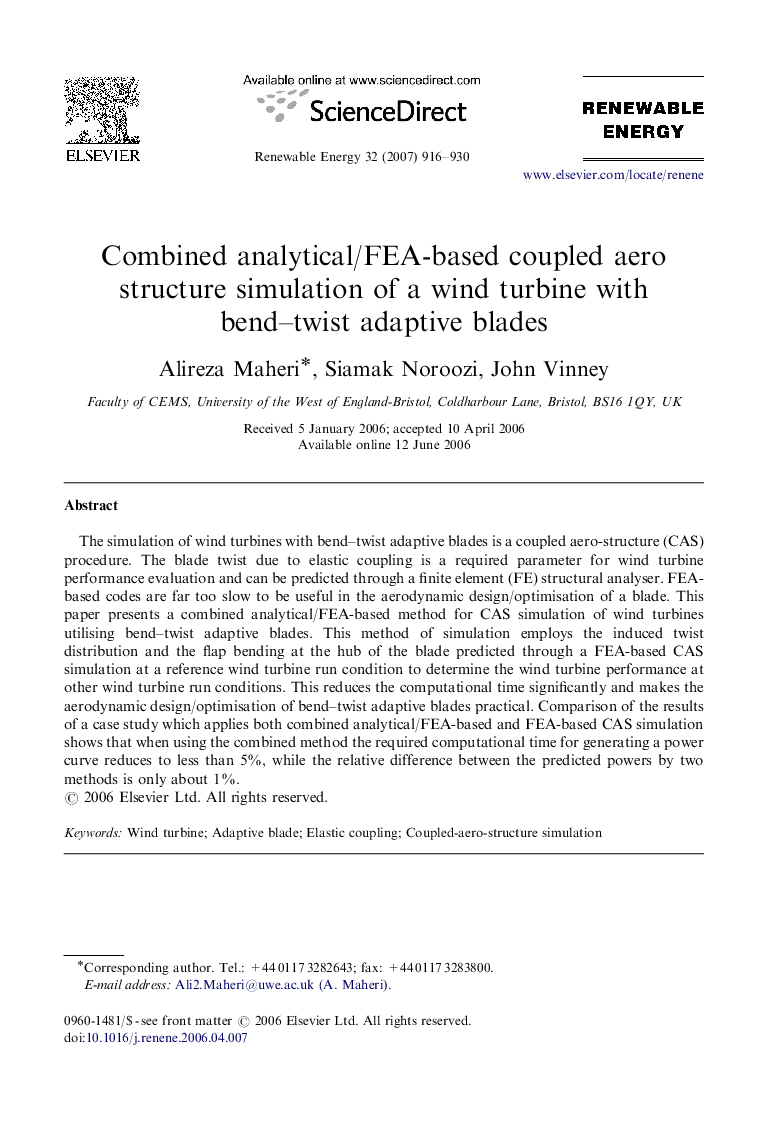| Article ID | Journal | Published Year | Pages | File Type |
|---|---|---|---|---|
| 302895 | Renewable Energy | 2007 | 15 Pages |
The simulation of wind turbines with bend–twist adaptive blades is a coupled aero-structure (CAS) procedure. The blade twist due to elastic coupling is a required parameter for wind turbine performance evaluation and can be predicted through a finite element (FE) structural analyser. FEA-based codes are far too slow to be useful in the aerodynamic design/optimisation of a blade. This paper presents a combined analytical/FEA-based method for CAS simulation of wind turbines utilising bend–twist adaptive blades. This method of simulation employs the induced twist distribution and the flap bending at the hub of the blade predicted through a FEA-based CAS simulation at a reference wind turbine run condition to determine the wind turbine performance at other wind turbine run conditions. This reduces the computational time significantly and makes the aerodynamic design/optimisation of bend–twist adaptive blades practical. Comparison of the results of a case study which applies both combined analytical/FEA-based and FEA-based CAS simulation shows that when using the combined method the required computational time for generating a power curve reduces to less than 5%, while the relative difference between the predicted powers by two methods is only about 1%.
